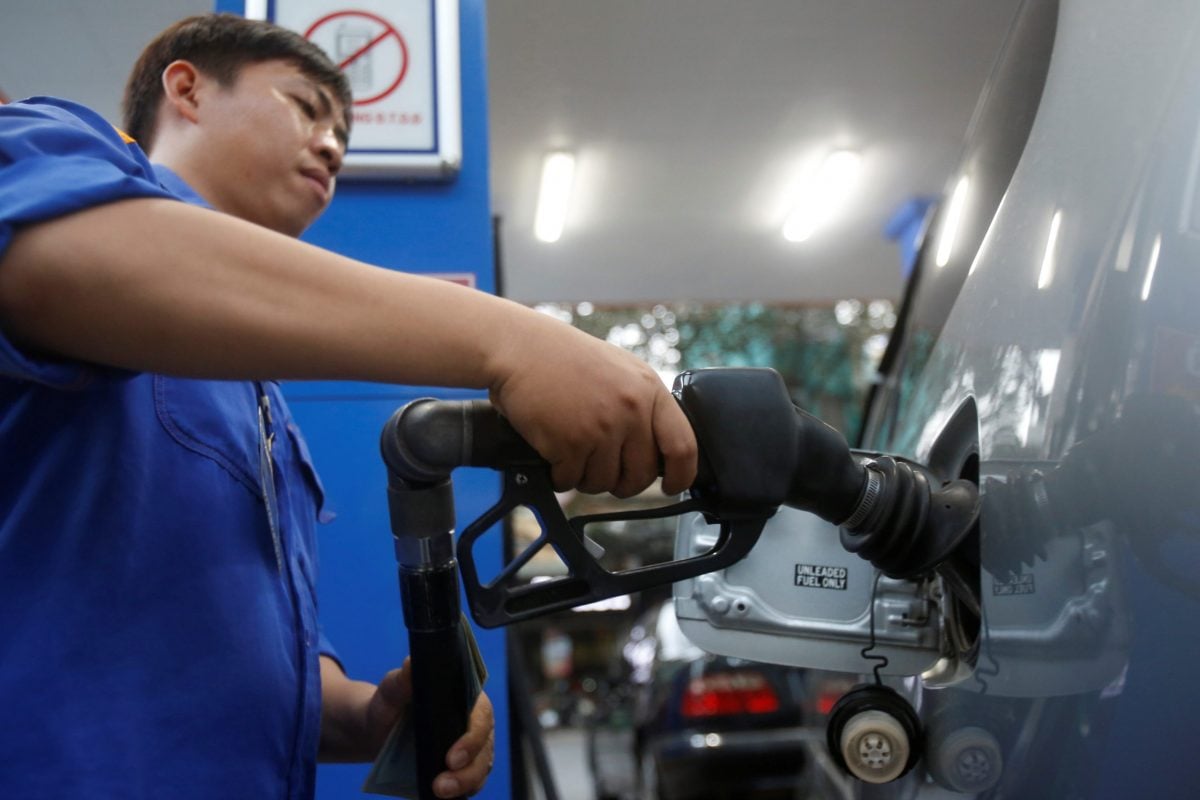The weakness of Vietnam’s fuel storage system has led to a series of problems in the country’s fuel supply over the past year. This prompted officials to develop long-term plans to increase future storage capacities.
Vietnam’s Ministry of Industry and Trade has prepared a plan to increase national fuel storage capacities with a required investment of 270 trillion dong ($11.51 billion) by 2030, according to Reuters.
(1 US dollar = 23.5 thousand VND)
The ministry’s plan to increase fuel storage capacity in Vietnam aims to keep pace with the country’s increased domestic demand and avoid any potential disruptions to domestic fuel supplies, according to the specialized energy platform.
Inventory increase to 80 days
The ministry aspires to increase the country’s strategic stockpile of crude oil and refined fuel derivatives to suffice 75 to 80 days of net imports by 2030, compared to 65 days at present.
All countries of the world, especially oil importers, resort to increasing their capacity for strategic fuel storage in anticipation of any external disturbances that may affect their ability to import for at least a few months.
Southeast Asian Vietnam faces intermittent domestic fuel supply crises due to global supply shortages and domestic refinery failures; This prompted it to think about enhancing future storage capabilities in anticipation of the recurrence or expansion of these crises in the coming years.
fuel crisis
The country experienced a crisis in the supply of fuel derivatives in November 2022; This led to the temporary closure of hundreds of gas stations in Vietnam’s largest cities, according to the specialized energy platform.
This crisis occurred due to financing problems for importers of oil derivatives. This prompted the country’s central bank to hold an urgent meeting to discuss ways to deal with bank loans to importers.
The Ministry of Industry and Trade anticipates any shortage of fuel supplies nationwide, for reasons related to Vietnam’s developing manufacturing capabilities and its transformation into a leading regional manufacturing hub in Southeast Asia.
Corporate betting
The ministry urges politicians and lawmakers to speed up the adoption of this plan so that it can open the door to competition to modernize the fuel storage system in Vietnam, but it did not mention a timeline for the stages of implementing its ambitious plan.
The ministry is betting on private sector companies to pump most of the investments required to modernize the fuel storage system in the country, without disclosing the size of government investments in the plan so far, according to what was monitored by the specialized energy platform.
Vietnam has been suffering from weak domestic exploration investments for crude oil in recent years. for many reasons; Among them is its proximity to China, which claims sovereignty over the South China Sea overlooking Vietnam, Indonesia, Malaysia and others, which represents a factor of fear for foreign investors in the oil and gas sectors.
Exploration investments decline
Oil investments in the country rebounded during the period from 2011 to 2015, and then declined significantly during the period from 2016 to 2020. This led to a decline in domestic oil production in Vietnam at a rate of one million tons annually.
Local data monitored 24 new discoveries in oil and gas during the five years ending in 2015, compared to only seven discoveries in the subsequent five years ending in 2020, according to the Ministry of Industry and Trade.
The first period also witnessed the signing of 21 contracts with foreign and local companies, compared to only 3 contracts during the second period, according to what was monitored by the specialized energy platform.
Investments in oil exploration and exploration rose during 2011-2015 to $4.7 billion, at a rate of $946 million annually, and foreign investments accounted for 57% of the total.
While investments declined during the period from 2016 to 2019, to $1.1 billion, at a rate of $279 million annually, and foreign investments accounted for 66.7% of them.
This record decline in oil investments led to a significant decrease in the country’s domestic production, and it was forced to increase alternative imports to cover the deficit. This increased foreign exchange pressure in the country.
Vietnam is one of the 20 largest coal consumers in the world, but it plans to transition to renewable energy and abandon coal in agreement with the Group of 7, which promised $15.5 billion in financing to help it reduce emissions and reach carbon neutrality by 2050.
related topics..
Also read..

Leave a Reply